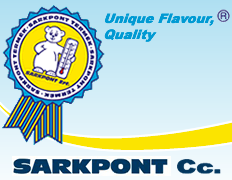|
Chestnut fruits can be examined for their shapes and sizes, as well as their inner characteristics. The shape of the fruit is mostly significant for its appearance (marketability) and, to a lesser degree, for its processing (manipulation).
The vertex and the shoulder
At the vertex of the nut, some of the brownish remains of the stigma can be found, which affect the fruit’s appearance. The vertex development of the different species of chestnut trees shows great variability. This characteristic can primarily be useful for differentiating among species, e.g. Nagymarosi 37 with a vertex, Nagymarosi 38 with a shoulder.
The "seal"
At the bottom of the chestnut fruit, the light brown, lustress cicatricle (the so-called „seal”) comes in specific shapes and sizes, and are characteristic of certain species; therefore, seals can be used as „species-stamps.” A large seal size is most
characteristic of the specie C. cranata and the species originating from it, e.g. the large-sealed Iharosberényi 57.
The hull
The hull can either be completely smooth or ribbed from the bottom to the vertex, and can occasionally have a wavy surface (there are several ribbed-surface chestnuts among the Italian maronis).
The color of the hull can range from yellowish-brown to dark brown. The ribbed-surface chestnuts also don reddish stripes. The species with the lighter hull-color are more delicious and thus, more marketable; the ones with the darker color have stronger, more racy flavors - pastry products made of them are also darker in color.
The thickness of the hull varies between 0.3 and 0.9 millimeters, which affects the amount of nuts produced by the particular species. For instance, better-quality chestnut species have thinner hulls, e.g. the Nagymarosi species.
The degree to which the inner hull grows together is the most significant
factor in the produce’s price, and is one of the descriptive characteristics of species. From this perspective, those cupules, which produce twin nuts, are detrimental to processing, since each of the nuts are covered with their own hulls, making the peeling process difficult. Even in the case of a single nut per cupule, a 2-3 mm thick hull is preferred.
The fruit
Of the fruit’s length, width, and girth characteristics, it is the width that is the most important, because in commercial circles, chestnuts are graded and categorized based on width. Our domestic standards consider a nut size over 30 millimeters first-class. The international standards categorize nut sizes over 32 mm as „maroni” quality.
Certain species regularly produce large fruits, although the exact size can vary based on the characteristics of the specific growth year and site. Species can be identified based on their proportion of annual „maroni”
fruit-yields; specifically, by the number of nuts per cupules: the „maroni”-quality species only produce one to three nuts per cupules. Italian chestnut-growers also attach percentages to different species; namely, the percentage of „maroni”-quality fruits produced by each specie.
Certain chestnut-tree species can also be identified by the lengths of the spikes on the cupules, and the direction they grow in. Species with fewer spikes are more prone to chestnut weevil-caused infections.
|


